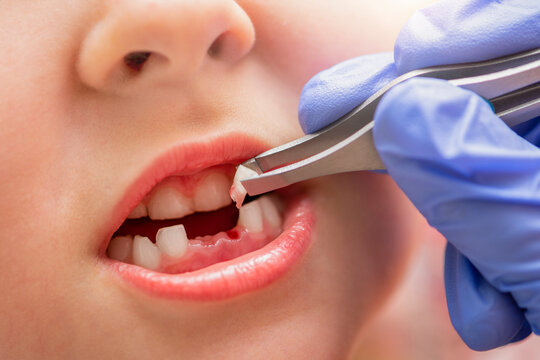
Deciduous Tooth Extraction
Extraction of deciduous teeth, commonly known as baby teeth or primary teeth, refers to the removal of these temporary teeth from the oral cavity. Deciduous teeth naturally exfoliate as part of the normal growth and development process, making way for the eruption of permanent teeth. However, there are situations in which the extraction of a deciduous tooth may be necessary.
Here are common reasons for the extraction of deciduous teeth:
In some cases, a deciduous tooth may not naturally fall out at the expected time. If a baby tooth doesn’t exfoliate on its own and there is a risk of impeding the eruption of the permanent tooth, a dentist may recommend extraction.
Over-retained deciduous teeth refer to situations where a baby tooth remains in the mouth even as the permanent tooth begins to emerge. This can lead to issues with alignment and spacing, and extraction may be recommended to allow for the proper eruption of the permanent tooth.
Decay or infection in a deciduous tooth can necessitate extraction. While preserving baby teeth is generally important for maintaining space for permanent teeth, severe decay or infection may compromise the health of the surrounding tissues.
If there is significant crowding or malocclusion (misalignment of the teeth) due to deciduous teeth, extraction may be recommended to create space for the proper alignment of permanent teeth.
In rare cases, deciduous teeth may become impacted, meaning they are unable to erupt properly. Impacted baby teeth can cause discomfort, affect surrounding teeth, and hinder the eruption of permanent teeth.
Extraction of deciduous teeth may be part of an orthodontic treatment plan to address issues such as crowding or malocclusion. Creating space through extractions can facilitate the alignment of permanent teeth during orthodontic treatment.
Process of Deciduous Tooth Extraction:
The dentist assesses the need for extraction based on clinical examination, X-rays, and consideration of the child’s overall oral health.
To ensure a pain-free experience, local anesthesia is administered to numb the affected area.
The dentist uses specialized instruments to gently remove the deciduous tooth. In some cases, the tooth may be loosened and then extracted using forceps.
The dentist provides post-extraction care instructions, including guidance on managing any discomfort and maintaining oral hygiene.
Deciduous tooth extraction is a common dental procedure that is typically well-tolerated by children. It is essential for parents to follow the dentist’s recommendations for post-extraction care and to ensure that their child practices good oral hygiene habits to promote the health of the permanent teeth as they emerge.
